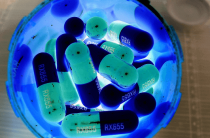Allergy is rightfully the disease of our century. Every year the number of allergy sufferers is increasing. This is especially true for children whose body is formed in the adverse conditions of modern ecology. Also of great importance are cases of hereditary transmission, which are increasingly exacerbating the trend.
Diagnosis of allergies is not as easy as it seems. After all, sometimes its symptoms can intersect with other diseases or disorders. In no case should a diagnosis be made based on the results of any analysis, which is the only one. In addition, this tactic is also erroneous for the reason that it is impossible to accurately assess the patient's state of health with its help, and this is necessary for prescribing the correct treatment.
To begin with, the allergist should ask the patient about his complaints, identify patterns of allergic reactions from potential allergens, learn all sorts of facts from the patient's life that can confirm this hypothesis or refute it. Also, the doctor, without fail, finds out if one of the patient's relatives suffers from allergies. Being a hereditary disease, allergies are transmitted to a greater extent from mother and father than from relatives of the second and third degree of kinship. Nevertheless, the last option for the transmission of allergic diseases by inheritance is not excluded.
It is also necessary to find out the characteristics of the patient's diet, the specifics of his work, the place of permanent residence, past and present diseases, as well as the medications and dietary supplements used.
Allergy symptoms in children
- Skin rashes, redness, inflammation and swelling of the skin, in places of manifestations of an allergic reaction. They can be localized both in certain places and spread throughout the body;
- Symptoms of conjunctivitis, which are inflammation and redness of the mucous membranes of the eyes and increased tearing.
- Allergic rhinitis, which is expressed in the fact that the patient's mucous membranes of the nose swell, which make it difficult to breathe. Often accompanied by a runny nose;
- Asthmatic manifestations: wheezing, dry cough, asthma attacks;
- Edema of various tissues and mucous membranes;
- Increase in body temperature
- It should be noted that the manifestation of allergy symptoms is a purely individual thing. There may be various symptomatic combinations, as well as atypical manifestations.
- Symptoms play a significant role in choosing the direction of the examination, but by no means can be the only diagnostic method.
Allergen exclusion method
This method, although not exclusively true, nevertheless helps to at least narrow the circle of allergens to that minimum. This tactic allows suspected allergens to be identified much faster through the use of minimal test kits. This method has been successfully used in the determination of food allergies or pollen allergies.
An example of an allergen exclusion method:
A patient allergic to flowering experiences allergy attacks in May. With the elimination method (exclusion method), it is necessary to exclude all plants whose flowering does not occur during this time period. Further, the test panel for skin tests for allergies is reduced to allergen plants that bloom in May. Plus, those plants with which the patient does not contact are excluded from these panels. This approach allows you to more effectively manage the time allotted for diagnosis and start treatment faster.
Often, this method is used for food allergies. The patient varies his diet, excluding various foods and closely monitors the body's reaction to these foods. Allergy symptoms, in the absence of contact with the allergen, last a maximum of two weeks (often), so if the allergy symptoms begin to subside during this time period, then there is every reason to consider this product as the cause of the allergy. To facilitate the implementation of elimination measures, the patient should keep a food diary, which will allow you to control the diet and track the dependence of the state of health on the intake of certain products.
Although laboratory tests are very accurate ways to determine the body's sensitivity to allergies, it must be taken into account that different tests affect different parts of the allergic reaction chain in different ways. This means that a successful diagnosis should by no means be limited to only one type of laboratory examination.
General blood analysis
A general blood test is taken without fail, both for allergies and for any other diseases and disorders. A complete blood count allows you to determine the state of health of the patient, and can also serve as the basis for other diagnostic methods aimed at determining concomitant diseases, which can significantly modify the treatment tactics.
A specific indicator in a general blood test for allergic diseases is an increased level of basophils. Basophils are special human immune cells that are directly involved in its work. In particular, they produce antibodies to allergens.
Skin tests
Skin tests, or as they are often called “scarification tests”, consist in the fact that a small amount of the allergen is injected into the patient with the help of shallow incisions. After that, an assessment of the body's reaction to the ingress of an allergenic substance takes place. So, local manifestations of an allergic reaction (itching, redness, peeling, etc.) serve as confirmation of the allergic status of a substance. Through the skin, biological substances penetrate weaker than through the mucous membrane, or through the circulatory system. This means that safety is higher with this method, since allergic reactions are often local in nature.
Skin tests are performed using various instruments, both surgical incisions and direct injection of substances through a syringe. Despite the fact that the method is highly safe, during its implementation it is possible to develop severe complications of allergic reactions, up to anaphylactic shock. At the same time, the patient should be under medical supervision and should be familiar with the use of emergency aid for acute allergic reactions.
Skin tests are not performed during acute forms of allergy, as this somehow involves direct contact with the allergen. And in some cases of the disease, the sensitivity of the body is so strong that even minimal contact can result in the development of severe exacerbations.
Provocative Tests
The fact is that skin tests are not suitable for patients whose allergic reaction is not highly sensitive. The organism of such a patient may not react in any way to the introduction of the allergen through the skin, since this method of administration involves minimal contact with the immune system. And if she does not have sufficient sensitivity, then the allergen can be completely ignored.
If there are serious reasons to believe that the allergy is still present, then provocative tests for the allergen are prescribed.
Benefits of provocative tests:
- Higher degree of specificity;
- Can be used in the absence of skin manifestations of allergies;
- Allow to recognize the organ that is most susceptible to an allergic reaction (eyes, nasal cavity, respiratory system)
Disadvantages of provocative tests:
The only drawback of provocative tests compared to skin tests is a higher degree of sensitivity. First, this is because the allergen is injected directly through the organ involved in the development of allergy symptoms. Secondly, due to the nature of tissue metabolism, a substance administered intramuscularly or by inhalation enters the bloodstream better than through the upper layers of the epidermis, which means that the risk of developing allergy symptoms is much higher. This is due to the fact that the provocative substance enters in a larger amount, in a shorter period of time and provokes a more global immune response.
This requires provocative tests to be carried out with great care. In no case should these tests be carried out outside the conditions of the hospital. It is mandatory to observe precautions when conducting provocative tests, in view of the increased risk of complications.
When conducting skin tests and provocative tests, you should not use antihistamines, corticosteroids and other substances that affect the removal of allergy symptoms. These drugs can introduce significant confusion in the data of laboratory research methods.
Blood test for IgE
An IgE blood test is a test that shows the presence of general and specific immunoglobulins in the blood. These are protein structures designed to bind to cells that pose a potential threat. This leads to the fact that a whole cascade of immune response reactions is launched. These diagnostic methods are based on the fact that in a normal state of health, these proteins in the blood are present only in a minimal amount.
An increase in their level occurs during parasitic invasions, as well as in the presence of allergic reactions occurring in an active form. These proteins form a stable chemical bond with allergen proteins and cause the release of substances that stimulate allergic processes in the body.
This method is based on the fact that immunoglobulins are present on the surfaces of basophils, and are detached in free form only when a provoking factor appears. This causes a sharp jump in their level when an allergen appears.
Venous blood sampling takes place on an empty stomach, since food intake can significantly affect the results of the tests.
Diseases with allergy-like symptoms
Helminthiases are diseases caused by the activity of parasitic worms inside the human body. Helminths can settle in a wide variety of tissues and organs of the human body, causing allergic reactions with the products of their metabolism. Their metabolism causes allergic-like reactions in the body.
Dysbacteriosis. This disorder is not a disease, but a consequence of the insufficiency of the gastrointestinal tract, which can occur for various reasons. In some cases, the waste products of bacteria that are unfavorable for our microflora develop symptoms that exactly coincide with allergic ones.
Pseudo-allergy. This disease is a consequence of exposure to the body, causing allergic-like symptoms of products. These products include: chocolate, cocoa, bee products, cirus fruits, strawberries, raspberries. The substances of these products are not allergens for the body, however, at elevated amounts, the components with allergenic potential in their composition cause a reaction in the body that resembles allergy symptoms. These products are undesirable for use during pregnancy, as they can exacerbate the symptoms of a true allergy. Compliance with a hypoallergenic diet is also part of the preventive measures used to treat allergies.
During the treatment of allergies in children, it is necessary to use drugs with extreme care, given that many drugs used by adults can have adverse effects on a growing organism.
Remember that only the attending physician has the right to diagnose and treat allergies. Self-medication is unacceptably dangerous to health.















